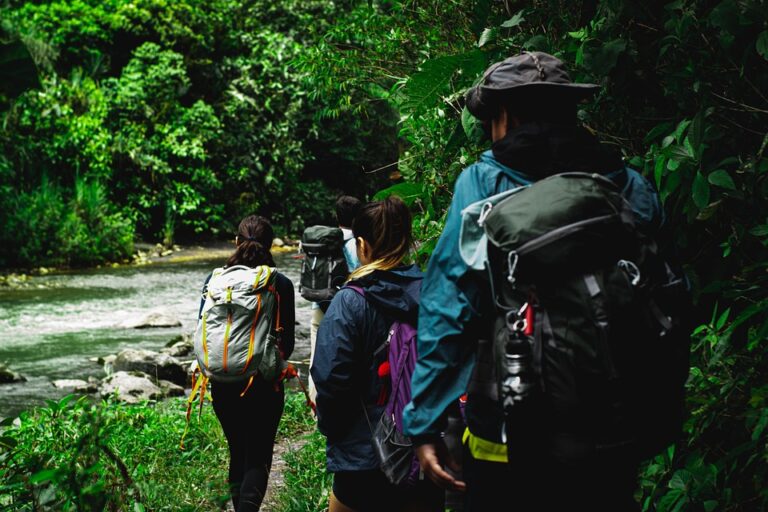Sustainable Backpacking: How to Leave No Trace on Your Adventures
Backpacking adventures have increasingly become popular as people seek to escape hectic lives and immerse themselves in nature. However, with this growing trend, it is essential to consider the environmental impact of our journeys. Sustainable backpacking not only allows us to enjoy the beauty of the great outdoors, but it also ensures that future generations can experience it as well. In this article, we’ll explore how to embark on unforgettable backpacking adventures while adhering to the Leave No Trace (LNT) principles.
Understanding Leave No Trace Principles
The Leave No Trace principles are designed to educate outdoor enthusiasts on minimizing their environmental footprint while enjoying nature. According to a 2021 survey conducted by the Outdoor Industry Association, 62% of outdoor enthusiasts stated they prioritize sustainable practices on their adventures. These principles include:
-
Plan Ahead and Prepare: Research trails and campsites ahead of time. This minimizes the risk of getting lost and ensures you’re following the guidelines set by the area you’re visiting.
-
Travel and Camp on Durable Surfaces: Stick to marked trails, and camp at established sites whenever possible. Avoid creating new paths or campsites, which can lead to soil erosion and vegetation destruction.
-
Dispose of Waste Properly: Carry out everything that you bring in, from food to packaging. Burying waste is ineffective; instead, use biodegradable bags and pack it out.
-
Leave What You Find: Do not collect rocks, plants, or historical artifacts. These items contribute to the environment’s value and integrity.
-
Minimize Campfire Impact: Use a portable stove instead of making a fire. If you must cook over an open flame, keep fires small and only burn dead and downed wood.
-
Respect Wildlife: Observe animals from a distance. Feeding wildlife can disrupt their natural feeding habits and lead to dependency on humans.
- Be Considerate of Other Visitors: Keep noise to a minimum, and maintain a respectful distance from other hikers and backpackers.
The Impact of Sustainable Practices
The importance of sustainable practices in backpacking adventures cannot be overstated. For instance, it is estimated that a single piece of litter can harm wildlife for decades. Further, according to the National Park Service, improper waste disposal leads to ongoing issues such as polluted trails and contaminated water sources. By adhering to LNT principles, we can protect a significant portion of the roughly 331 million acres of national parks in the U.S.
How to Prepare for Your Sustainable Backpacking Adventure
Preparation is key to successful and environmentally-friendly backpacking. Here are some practical steps:
-
Choose Eco-Friendly Gear: Opt for gear made from sustainable materials and consider second-hand options when possible. This not only reduces your carbon footprint but also saves you money!
-
Stay Informed: Familiarize yourself with the unique ecosystems you’ll be visiting. Understanding flora and fauna helps you appreciate your surroundings and impacts how you interact with them.
- Educate Your Group: Share LNT principles with your companions. Teamwork fosters an environment where everyone holds each other accountable.
Example of Sustainable Packing
For instance, if you’re planning a three-day backpacking adventure, create a list that prioritizes sustainability:
- Food: Bring lightweight, non-packaged, and high-energy trail foods like nuts, dried fruits, and energy bars.
- Hydration: Invest in a water filter instead of bottled water. According to the Environmental Protection Agency, over 60 million plastic water bottles end up in landfills each day in the U.S.
- Cooking Gear: Use a compact stove that can boil water quickly, minimizing fuel consumption.
Conclusion: Embrace the Adventure Responsibly
Sustainable backpacking is not just a trend; it’s a lifestyle choice that benefits everyone. By following Leave No Trace principles, you ensure that your backpacking adventures allow you to connect with nature while preserving it for others. Remember, each small effort contributes to a larger movement promoting environmental stewardship.
If you’re interested in diving deeper into sustainable travel practices, check out our articles on Eco-Friendly Travel Tips and The Best Outdoor Gear for Sustainable Adventures. For external resources, visit Leave No Trace’s Official Website or explore the Outdoor Industry Association for more insights on sustainable outdoor adventures.
Suggested Image Inserts:
- Image 1: A hiker carrying a backpack on a durable trail. (Alt text: Backpacking adventures on a sustainable trail)
- Image 2: A group cleaning up a campsite. (Alt text: Group practicing Leave No Trace principles during backpacking adventures)
With these guidelines, you’re all set to embark on your backpacking adventures while caring for the environment. Happy hiking!


